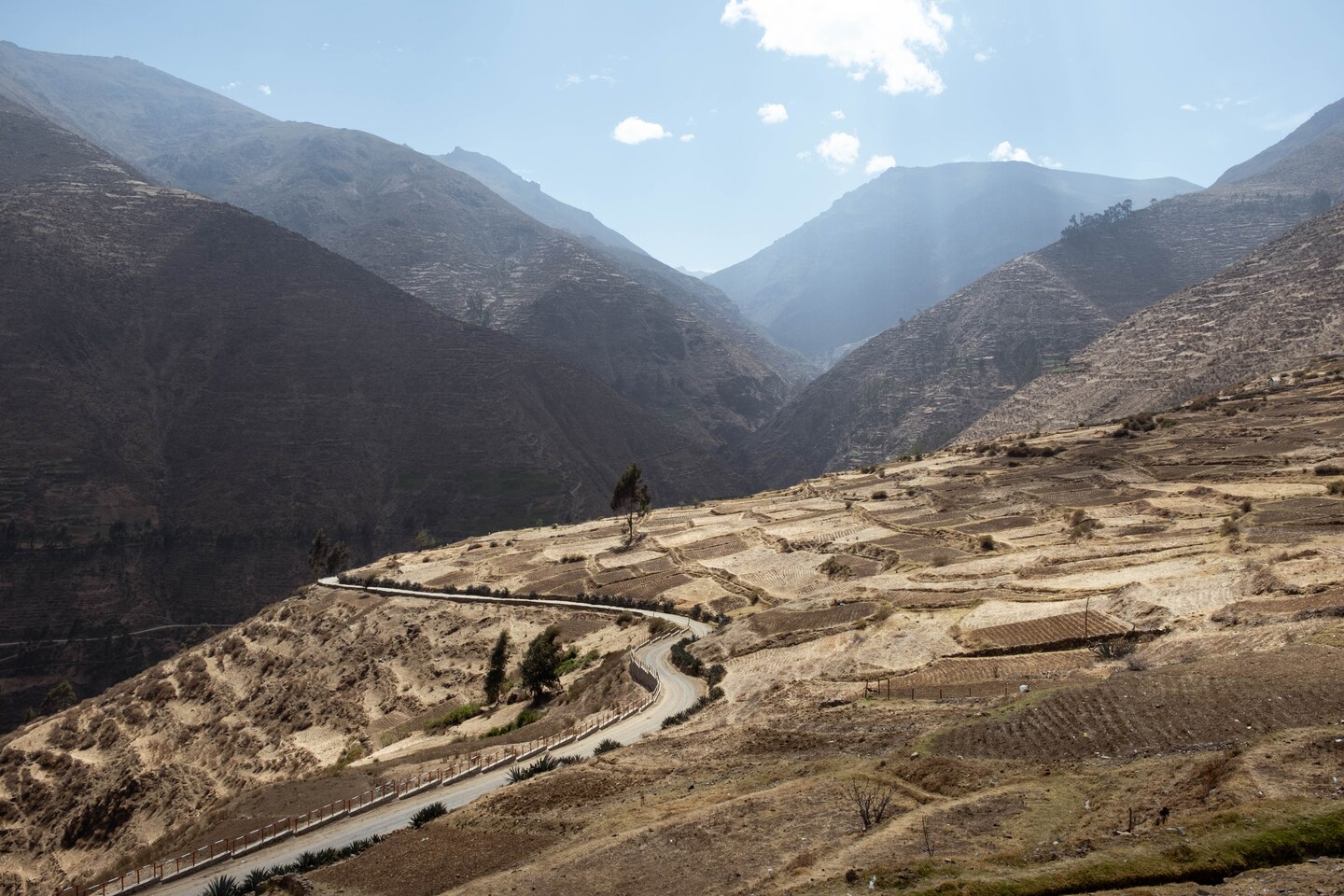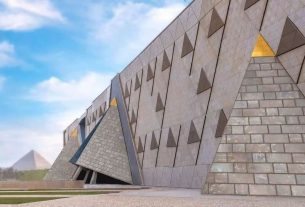“Twenty years ago, the soil would be damp. There used to be waterfalls,” says Obispo, gesturing at a dusty bluff above. “Now, there just isn’t enough pasture anymore. What’s it going to be like in 2030?”
But now the water is beginning to trickle, for perhaps the first time in centuries.
The amunas — permeable stone-and-adobe walls 18 inches high that run for miles across this imposing landscape — divert excess water from streams that during the rainy season would otherwise flow uncontrolled down the mountains and eventually be lost in the Pacific Ocean.
They then infiltrate that water into the soil, replenishing the water table and ensuring its gradual release throughout the year in natural springs. The ancient technology also improves water purity and helps prevent erosion and landslides.
Obispo is one of a dozen villagers laboring together in the tropical mountain sun to rescue this five-mile-long amuna, excavating it from the accumulated earth and refurbishing it in a pilot project that holds promise for this arid landscape.
“The amunas are the only hope,” says Obispo, who lives here in a community of 400. “Without them, San Pedro de Casta will die.”
Yet the project, organized by the local nonprofit Aquafondo, is intended to also benefit populations far beyond this remote region. A hair-raising four-hour drive some 13,000 feet below lies Lima, thought to be the world’s third most populous desert city, after Cairo and Karachi, Pakistan.
Nestled beside the Pacific in what is effectively a northern extension of South America’s Atacama Desert, the location of Peru’s chaotic capital of 10 million was chosen in the 1500s by the conquering Spaniards rather than the ecologically savvy Indigenous residents — and has become increasingly problematic with the explosive growth of recent decades.
Lima’s water supply is dependent largely on three small rivers that descend from the Andes and fluctuate during the year from bone dry to raging torrents whose volume can overwhelm the state-owned water utility.
The company, Sedapal, has invested heavily in high-altitude reservoirs above San Pedro de Casta and initiated the construction of several costly desalination plants, to remove salt from ocean water. Yet Lima still suffers a water gap of about 100 cubic feet per second.
That means that roughly 1 million poorer inhabitants on the margins of the city lack running water. They rely instead on an unregulated fleet of tanker trucks dispensing untreated water at rates 10 times greater than those paid by more affluent limeños connected to water lines.
The deficit could be made up almost entirely by water delivered by amunas, researchers have calculated. To get there, Peru would have to restore hundreds of miles of the prehistoric dikes across all three watersheds that serve Lima.
“The idea is first to help the local community, the guardians of the water. Otherwise, we would just be using them,” says Mariella Sánchez, Aquafondo’s executive director. “But the objective is the same for those who live downstream in Lima: To improve living conditions.”
The San Pedro de Casta model, which is being funded by Backus, Peru’s largest beer and beverages company, and GIZ, Germany’s international aid agency, is one of several pilots being attempted by different nonprofits.
The development of the amunas around 600 B.C., centuries before the rise of the Incas, remains shrouded in mystery because Andean cultures did not develop writing. Their revival now could be scaled nationally to benefit other coastal cities.
As the source of the Amazon River, Peru is blessed with abundant fresh water. But 98 percent of its precipitation cycles eastward, from the Andes and the Amazon toward Bolivia, Colombia, Brazil and the Atlantic, while two-thirds of its 33 million people live on the country’s arid western coastal strip.
The effects of the climate crisis in the Peruvian Andes are complex. The highest of Lima’s watersheds are receiving slightly more precipitation than before, but in more intense, harder to manage bursts. Lower down, at the level of San Pedro de Casta, there is less.
Obispo says the rains that once ran from around Christmas through April now typically arrive in mid-January and end in mid-March. Local herds of cows and goats have dropped 40 percent, he says, while harvests of potatoes, corn and broad beans have dropped between 30 and 50 percent.
Reviving the amunas could be complemented by projects to restore the puna, the high-altitude tundra ecosystem that, when healthy, holds water like a sponge.
A consortium of nongovernmental organizations, backed by the U.S. Agency for International Development and involving researchers from Imperial College London, have begun the sensitive work of encouraging mountain communities to swap their horses and cattle for more sustainable llamas and alpacas.
The native South American camelids have soft foot pads and nibble only the tips of the grass — unlike the imported livestock, which pull up the slow-growing vegetation by the roots while their hoofs compact the soil.
These green measures can cost 100 times less per cubic foot of water than investing in gray infrastructure such as dams and reservoirs. Sedapal views the different approaches as complementary and equally necessary to ensure Lima’s water security in the coming decades.
For San Pedro de Casta, the benefits of restoring the local amunas are expected to come much more quickly, over the next 12 months. “This could be a turning point,” says Obispo. “We’re hoping that some people who have left the village will now even consider coming back.”




